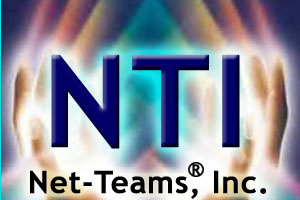 |

The Anatomy Of A Dollar Bill |
|
|
Submitted by Carpenter Joe
| RSS Feed
| Add Comment
| Bookmark Me!
Greenbacks. Moolah. Dough. Benjamins. All nicknames for the one thing we’re all in an endless quest to get more of—cash money. It’s as much a part of our everyday lives as is sleep, food, even breathing. But have you ever really stopped to take a look at these little green monsters that seem to run our lives?
If you really take a closer look at our notes of legal tender, there’s really quite a bit going on. So the next time you’re not busy spending one—or if you have absolutely nothing else to do—grab a dollar bill from your wallet and take a good long look at it. After you read this article, you’ll finally know what all those symbols and strange words mean.
First things first, feel the money in your hands. Doesn’t really feel like paper, does it? That’s because it isn’t. Paper money isn’t really paper at all. It’s actually a linen and cotton blend—a cloth! That’s why it doesn’t fall apart when it goes through the washing machine. In fact, there are even tiny red and blue silk fibers running through each bill.
Now, take a good look at the overall design. The dollar bill we use today first was first put into circulation in 1957. The ink used for printing is made of a secret blend—one of many built-in security features used to prevent counterfeiting.
Take a look at the front first, to the right of the portrait you’ll notice a green stamp—the seal of the U.S. Treasury. It includes scales representing a balanced budget, a carpenter’s square signifying an exact cut, and a key to the Treasury itself. On the front, you’ll also notice green serial numbers, the signatures of the U.S. treasurer and secretary of the treasury at the time the bill was printed, and the seal of the mint where the bill was printed.
Now, turn the bill over. You’ll notice a circle on either side. Together, they represent the Great Seal of the United States, created by Benjamin Franklin and a group of our country’s founders in 1782. Go to the left circle first and look at the pyramid. The face is lighted while the western side remains dark. The darkness signifies the Western U.S., which had yet to be explored. The unfinished pyramid represents the untapped potential of the country, while the all-seeing eye hovering above is symbolic of a divine being overseeing mankind. In this circle, you’ll find two Latin phrases, “ANNUIT COEPTIS” (God has favored our undertaking), and “NOVUS ORDO SECLORUM” (A new order has begun).The Roman Numerals at the base of the pyramid translate to 1776.
The circle on the right might look more familiar to you. That’s because it’s prevalent on many national monuments, cemeteries, and—though slightly tailored—is also the Seal of the President of the United States. The centerpiece of the Seal is the Bald Eagle. It was selected as the official symbol of the U.S. for a couple of reasons: Though not afraid to weather a storm if he must, the eagle first looks to fly above it. Also, though it may appear so, the eagle wears no actual crown—symbolic in the country’s break from the King of England. Additionally, the eagle’s shield requires no support; it now can stand by itself.
Other details of note: the white bar on the top of the shield represents the unifying power of congress, the term “E PLURIBUS UNIM” means “one nation from many people”, and the 13 stars signify the 13 original colonies. The eagle holds an olive branch in one set of talons arrows in the other. His gaze, though fixed at the peace-representing olive branch, won’t hesitate to turn to the sling of arrows if need be.
So there you have it; all you ever wanted to know about the design ideas behind our beloved U.S. currency. Use it to enlighten guests at your next dinner party, or inform the guy at the coffee shop as you hand him a five dollar bill for that latte.
|
|
 |

|
|
LinkedIn Recommendation:
 Doug Smart - Author, speaker, exec coach. 20+ yrs expertise worldwide teaching how to identify personal strengths for success. -
Teo Graca is a modern Renaissance Man with a deep intellect and a gift for bringing people together to make things happen. - May 9, 2013, Doug was with another company when working with Teo at Net-Teams, Inc.
Doug Smart - Author, speaker, exec coach. 20+ yrs expertise worldwide teaching how to identify personal strengths for success. -
Teo Graca is a modern Renaissance Man with a deep intellect and a gift for bringing people together to make things happen. - May 9, 2013, Doug was with another company when working with Teo at Net-Teams, Inc.
|
|
Featured [Carpentry] Articles:
|
 |
